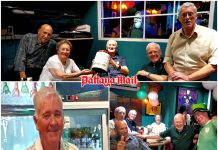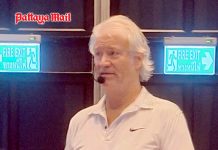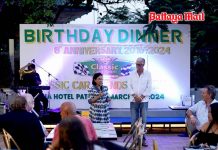Pattaya City Expats Club (PCEC) hears the views of a Buddhist scholar about Wat Phra Dhammakaya, which has been front and center in the news lately. In his presentation to the PCEC on Sunday, May 29, Dr. Mano Mettanando Laohavanich focused primarily on the growth in both size and influence of the Wat Phra Dhammakaya in the past 40 years. He also provided a brief update on the proposed interim Thai charter.
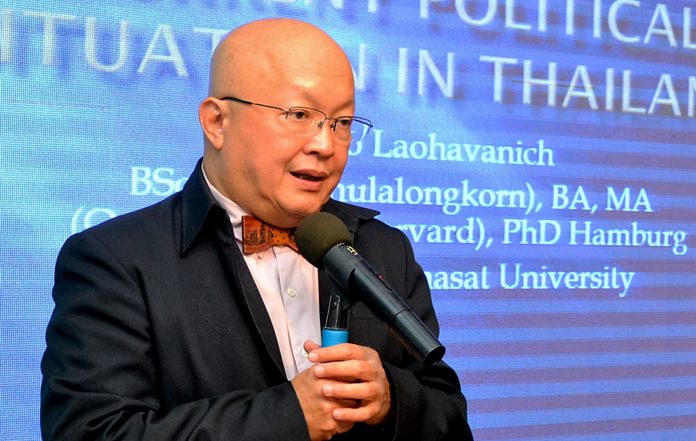
Dr. Mano is a former monk well known in Thailand and overseas. He has written a number of books in Thai and English introducing a new way of interpreting the Buddhist canon. His work includes novels, dramas and more than 100 TV programs televised in Thailand for the promotion of social ethics. He is a prolific writer in English and Thai newspapers on the issues of social ethics. He presently is on the Committee for Buddhism Reformation of the National Reform Council of Thailand.
Wat Phra Dhammakaya is located in the Khlong Luang District of Pathum Thani Province, about 16 kilometers north of Don Muang airport. The Wat, established in the 1970s, has grown to become the largest temple in Thailand. Its grounds now occupy more than 2,000 acres. According to Wikipedia, the community living at Wat Phra Dhammakaya now numbers 3,000 monks, novices, laymen and laywomen. Congregations on Sundays and major religious festivals reach 100,000 in size.
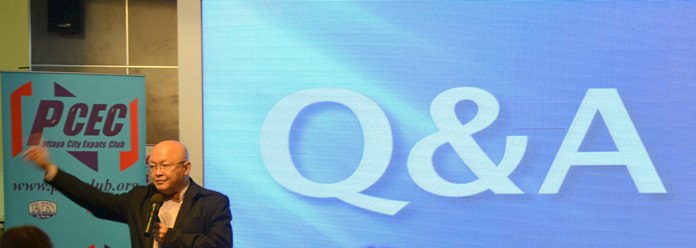
Wat Phra Dhammakaya has set up Buddhism clubs all over Thailand and in other countries. In Thailand alone, Dr. Mano said, there are 6,968 clubs. His view is that that Wat Phra Dhammakaya is trying to spread Dhammakaya Meditation worldwide. He mentioned that it is a form of mediation founded by Phra Mongol Thepmuni in the early 20th century. Dr. Mano explained that on the full moon day of August 1915, while he was meditating in the morning after his alms round, Phra Mongol Thepmuni saw a bright shining crystal ball appear in the center of his body.
He believed that this meant that true awareness was inside every person. He referred to his discovery as “Dhammakaya” – a bright shining Buddha of crystal appearance. The emphasis in Dhammakaya is on the true self, as opposed to Nirvana, a major facet of the Theravada Buddhism practiced in Thailand, where the focus is outside oneself.
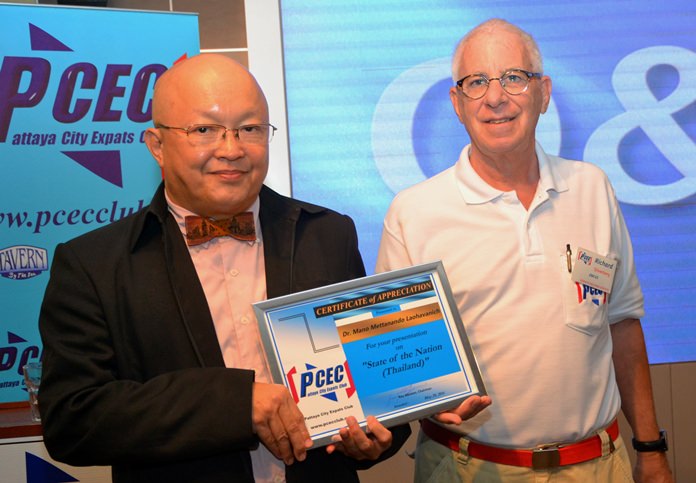
Dr. Mano said that Phra Mongol Thepmuni traveled to many monasteries promoting what he had found. In 1916, he went to Wat Paknam Phasecaroen as its abbot. Further, Phra Mongol Thepmuni became more famous during World War II as a miracle worker and healer. However, Dhammakaya Meditation, with its emphasis on “self” was strongly criticized by many Buddhist monks and scholars, who said it was leading Buddhism astray from its true spirit of Theravada. Phra Mongol Thepmuni was charged with heterodoxy and tried, but he was found not guilty. (“Heterodoxy” means not in accordance with established or accepted doctrines or opinions.)
Wat Paknam remained the center for Dhammakaya Meditation until the founding and expansion of Wat Phra Dhammakaya. Dr. Mano’s opinion was that as the Wat Phra Dhammakaya grew, it became more and more focused on money. Dr. Mano wrote about this and other aspects of Wat Phra Dhammakaya in article in 2012 in the Journal of Buddhist Ethics.
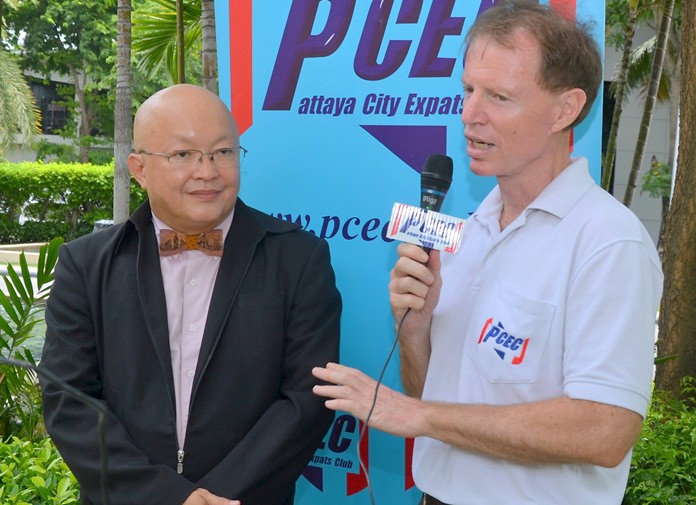
Wat Phra Dhammakaya is no stranger to controversy. In 1999 and 2002, Phra Dhammachayo was accused of fraud and embezzlement by the media and later the government. However, according to Wikipedia, The Supreme Sangha Council, the top body in organized Buddhism in Thailand, declared that Wat Phra Dhammakaya had not committed any serious offenses against monastic discipline; and the Thai National Office for Buddhism cleared Phra Dhammachayo of all accusations when he agreed to transfer the funds involved to the temple.
Regarding the political situation in Thailand, Dr. Mano spoke briefly about the interim charter which will be voted on in a national referendum on 7 August. The interim charter calls for a National Legislative Assembly of 200 members which would be responsible for drafting laws and selecting a prime minister. It also calls for a National Reform Council made up of 250 members: one from each of the 77 provinces and 173 from various sectors. Each of 11 committees will prepare shortlist of 50 candidates. The National Council for Peace and Order (NCPO) will select the 173 members from these 550 candidates.
There will be 35 people on the Charter Drafting Committee, of which 20 will be appointed by the National Reform Council; five by the Cabinet; five by the National Legislative Assembly; and five by the NCPO. The Committee will prepare a draft of a permanent constitution and submit it to the National Reform Council for approval. Under the proposed Interim Charter, the NCPO is granted an amnesty for its actions following the coup.
After the presentation, MC Roy Albiston brought everyone up to date on club activities and happenings around Pattaya before calling on Ira Wettenstein to conduct the Open Forum, where questions are asked and answered about Expat living in Thailand, especially Pattaya.
For more information on the PCEC’s many activities, visit their website at www.pcecclub.org.


